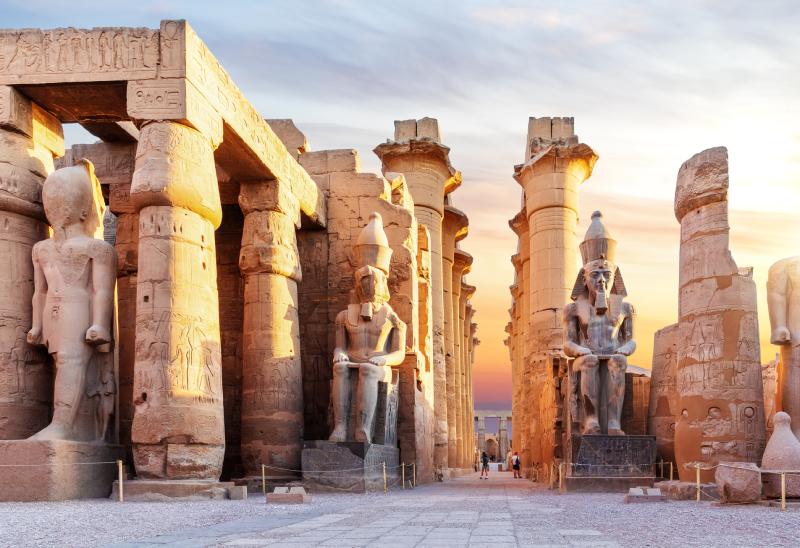
Luxor city remains a living museum of ancient Egyptian civilization. Ancient Egyptians called it Waset, and this remarkable urban center housed over 40,000 people. The city served as Egypt's capital during the Middle and New Kingdoms. Its temples' magnificence shows the power and spiritual importance this city held throughout Egyptian history.
The temples of Luxor and Karnak stand as architectural marvels that amaze visitors today. Luxor Temple took hundreds of years to build, with notable pharaohs like Amenhotep III, Ramses II, and Tutankhamun contributing to its grandeur. The temple's Great Colonnade Hall stretches almost 61 meters with 28 towering columns. The Temple of Karnak demonstrates ancient Egyptian ambition by a lot and ranks as the second largest ancient religious site in the world after Cambodia's Angkor Wat. Karnak's construction lasted more than 3,700 years, and 30 different pharaohs shaped its extensive history. A two-mile Avenue of Sphinxes connects these magnificent temples and once served as the processional route for the Festival of Opet celebration.
Luxor is situated in southern Egypt, approximately 650 kilometers (400 miles) south of Cairo. It lies on the east bank of the Nile River and is part of the modern-day Luxor Governorate. The city occupies the site of ancient Thebes, the former capital of the New Kingdom of Egypt, and is divided into two main areas: the East Bank and the West Bank.
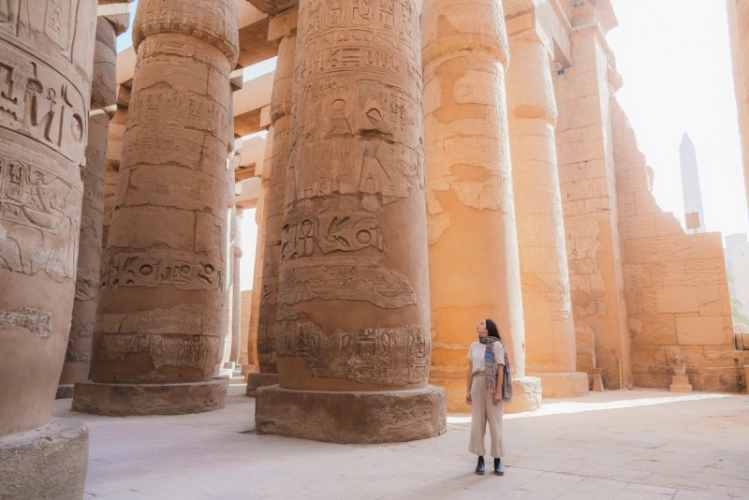
Luxor City is synonymous with ancient Egyptian history. It once served as the capital of Egypt during the height of the New Kingdom, and its historical significance cannot be overstated. Known in antiquity as Thebes, Luxor was the epicenter of political, religious, and cultural activities in ancient Egypt. The city was a hub for pharaohs, who enriched it with grand temples, colossal statues, and intricate tombs.
The grandeur of Luxor City is epitomized by its royal necropolis, the Valley of the Kings. This burial site is home to the tombs of many pharaohs, including the famous tomb of Tutankhamun. These subterranean wonders, adorned with elaborate paintings and hieroglyphs, offer invaluable insights into the beliefs and practices of ancient Egyptians. The discovery of Tutankhamun's tomb in 1922 remains one of the most significant archaeological findings of the 20th century.

Luxor City is a paradise for explorers, offering a plethora of attractions that captivate and inspire. Among the city's most iconic sites is:
The temples of Luxor are masterpieces that showcase the artistic and architectural brilliance of ancient Egypt. These sacred structures were not only places of worship but also centers of power and culture. The Luxor Temple, situated in the heart of the city, is a magnificent edifice that stands as a symbol of the city's enduring legacy. The temple's avenue of sphinxes, colossal statues, and majestic obelisks are a testament to its historical significance.
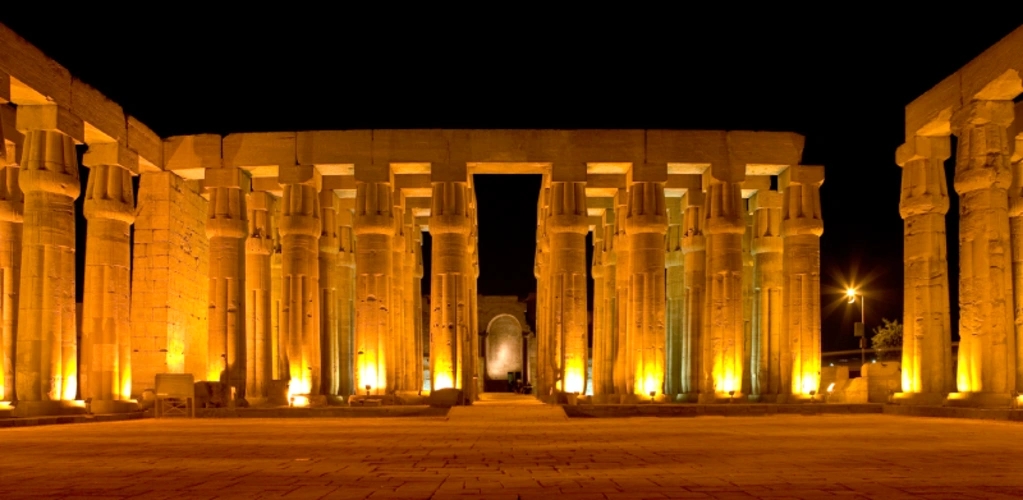
The Karnak Temple Complex stands as the largest religious building ever constructed. This sacred site spans about 200 acres. The complex evolved through 1,000 years between the Twelfth and Twentieth Dynasties. The Great Hypostyle Hall sits at its heart with 134 massive columns arranged in 16 rows. The 12 central columns reach an impressive height of 69 feet with a diameter that's more than 9.8 feet. Ancient Egyptians named this magnificent place "Ipet-isut," which means "The Most Select of Places".

It is another significant attraction in Luxor City. This burial site, dedicated to the queens and royal children of the New Kingdom, offers a glimpse into the lives of the royal women of ancient Egypt.
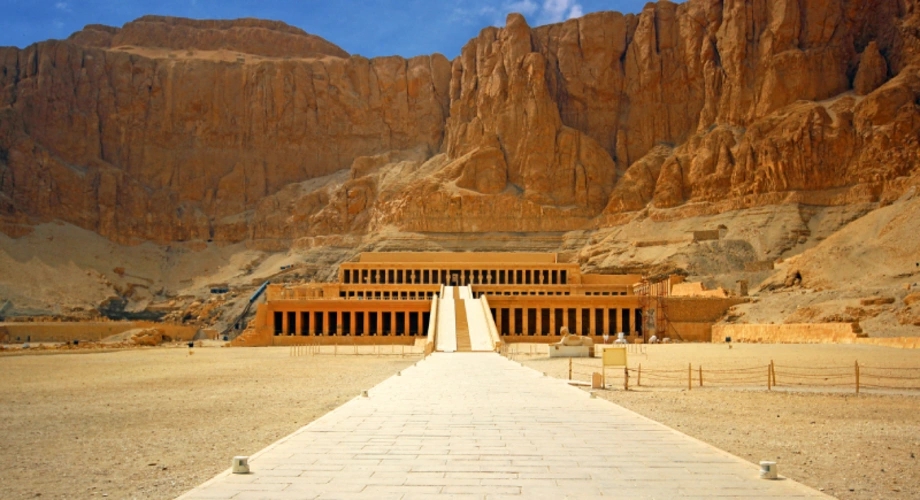
The tomb of Queen Nefertari, renowned for its exquisite artwork and vibrant colors, is considered one of the most beautifully decorated tombs in Egypt. Luxor City's attractions are not just sites to visit; they are experiences that transport visitors to the grandeur of ancient times.

Queen Hatshepsut's mortuary temple, "Ḏsr-ḏsrw" ("Holy of Holies"), stands as an architectural masterpiece. The temple features a unique three-tiered design carved into Deir el-Bahari's limestone cliffs. Several important areas make up the temple - the Royal Cult Chapel, Solar Cult Chapel, and Amun's Sanctuary carved straight from the cliff. The temple walls tell stories through reliefs that show Hatshepsut's famous Punt expedition and scenes that justify her unprecedented reign as female pharaoh.

Two giant stone statues of Pharaoh Amenhotep III form the Colossi of Memnon, which once guarded his mortuary temple. These statues reach 18 meters high on their platforms and weigh about 720 tons each. The statues gained fame when one started "singing" at dawn after an earthquake in 27 BC. The mysterious whistling sound drew ancient tourists. Roman Emperor Septimius Severus repaired the statue around 199 AD, which stopped this fascinating phenomenon.

The Mortuary Temple of Ramesses III at Medinet Habu claims the title of second-largest surviving temple in Egypt. This remarkably intact complex extends approximately 210 by 300 meters and houses over 7,000 square meters of elaborately decorated wall reliefs. These stone canvases depict dramatic military campaigns waged against Libyans and the mysterious Sea Peoples. A massive fortified mudbrick enclosure surrounds the sacred precinct, punctuated by an imposing migdol (gate-house) entrance.

Luxor is a treasure trove of handmade crafts and traditional gifts. Great places to shop include:
1. Souq of Luxor:
Located near Luxor Temple, this market is packed with shops selling spices, jewelry, alabaster statues, papyrus paintings, and perfumes.
2. West Bank Artisan Villages:
Especially in areas like Qurna, local craftsmen produce beautiful alabaster vases and hand-carved figurines.
3. Government Shops:
If you’re looking for fair prices and authentic items, consider visiting government-run bazaars like the Habiba Gallery.
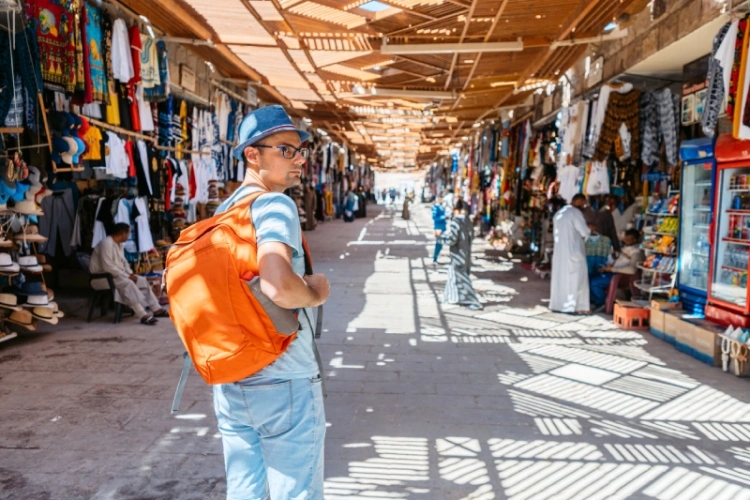
Getting around Luxor is straightforward, and multiple transportation options are available:
Taxis: Widely available and convenient, though it's recommended to agree on the fare before starting your trip.
Horse-Drawn Carriages: Known locally as "caleches," these are popular among tourists for a scenic and nostalgic ride through the city.
Feluccas: These traditional wooden sailboats are ideal for a peaceful cruise on the Nile.
Bike Rentals: Especially common on the West Bank, renting a bicycle is a fun way to explore temples and villages at your own pace.
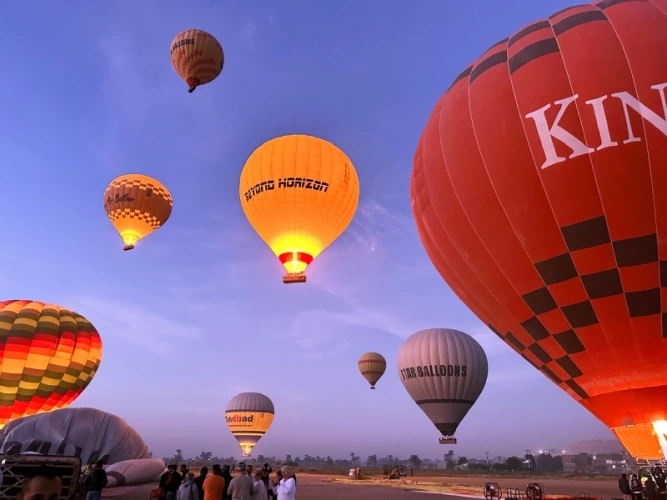
No visit to Luxor is complete without sampling its street food. Local favorites include:
Taameya: Egypt’s version of falafel, made with fava beans and herbs, crispy on the outside and soft inside.
Koshari: A filling and flavorful mix of pasta, rice, lentils, chickpeas, and spicy tomato sauce.
Ful Medames: A staple Egyptian breakfast made from stewed fava beans, often eaten with flatbread and pickles.
Sugarcane Juice (Asab): A refreshing drink served from roadside stalls, perfect for beating the desert heat.
Street food is best enjoyed fresh and hot. Look for stalls where locals are gathering,that’s usually a sign of quality and hygiene.

Luxor offers a wide range of accommodations to suit all budgets and preferences:
Luxury Hotels: Names like the Sofitel Winter Palace and Hilton Luxor Resort & Spa provide 5-star comfort with Nile views and historic charm.
Mid-range Options: Hotels such as Steigenberger Nile Palace offer great service and amenities at moderate prices.
Budget Stays: For budget-conscious travelers, guesthouses and hostels like the Nefertiti Hotel or Boomerang Hotel offer friendly atmospheres and helpful local hosts.
Most tourists choose to stay on the East Bank, where you'll find easier access to restaurants, shops, and the train station.
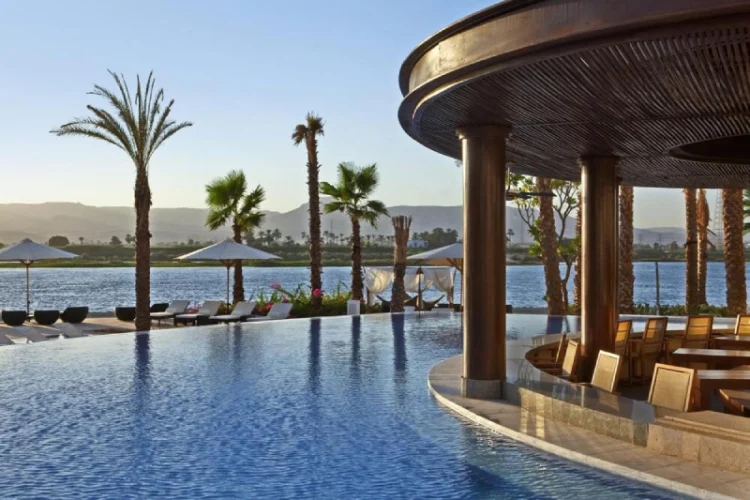
When planning a visit to Luxor City, timing is everything. The best time to explore this captivating city is during the cooler months, from October to April. During this period, the weather is more pleasant, making it ideal for sightseeing and enjoying outdoor activities. The temperatures are mild, allowing visitors to comfortably explore the city's many attractions without the sweltering heat of the summer months.
Luxor City is a year-round destination, but visiting during the peak tourist season, from December to February, offers a unique experience. The city comes alive with various cultural events and festivals, providing visitors with an opportunity to immerse themselves in the local culture. The vibrant atmosphere, coupled with the city's historic charm, creates an unforgettable experience for travelers.
Luxor City is a destination like no other, a place where history, culture, and beauty converge to create a truly unforgettable experience. From the awe-inspiring temples and tombs to the vibrant streets and delectable cuisine, Luxor offers a journey through time and a feast for the senses. The city's rich historical legacy and architectural grandeur continue to captivate and inspire travelers from around the world.
As the sun sets over the Nile, casting a golden glow on the ancient monuments, Luxor City reveals its timeless charm. It is a place where the past and present coexist, offering a glimpse into the grandeur of ancient Egypt and the vibrant culture of modern-day Luxor. Whether you're exploring the majestic temples, wandering through bustling markets, or savoring the local cuisine, Luxor City promises an experience that is both enriching and unforgettable.
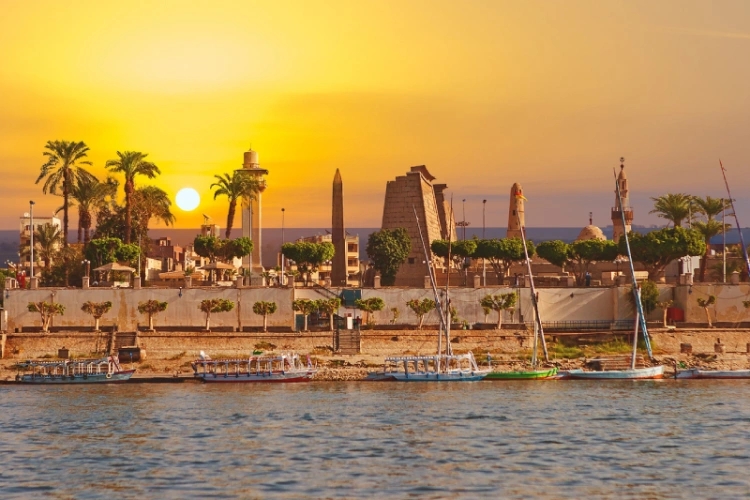
Q1. What makes Luxor a worthwhile destination for travelers?
Luxor is renowned for its magnificent temples and rich historical significance. The city offers a unique perspective on Ancient Egypt, showcasing grand structures like Karnak and Luxor temples, which rival the famous pyramids in their historical importance and architectural splendor.
Q2. When is the best time to visit Luxor?
The best time to visit Luxor City is from October to April, when the weather is cooler and ideal for sightseeing. Peak season, from December to February, offers a vibrant cultural experience with festivals and events, making it an especially memorable time to explore the city.
Q3. What are the must-see attractions in Luxor?
Top attractions include Karnak Temple, Luxor Temple, Valley of the Queens, Hatshepsut's Temple, and the Colossi of Memnon.
Q4. What are some family-friendly activities in Luxor?
Families can enjoy felucca boat rides, visiting the Mummification Museum, or taking a hot air balloon ride over the West Bank.
Q5. Is Luxor suitable for solo travelers?
Yes, Luxor is generally safe and welcoming for solo travelers, especially those interested in culture and history.
Q6. Can I take a Nile cruise from Luxor?
Yes, many Nile cruises start or end in Luxor, sailing between Luxor and Aswan with stops at major historical sites along the way.
Q7. What types of accommodations are available in Luxor?
Luxor has a wide variety of options, from luxury hotels to budget hostels, catering to every traveler's budget and style.
Q8. What are the best luxury hotels in Luxor?
Top luxury options include the Sofitel Winter Palace and Hilton Luxor Resort & Spa, both offering 5-star service, Nile views, and historical elegance.
Q9. Which area of Luxor is best for tourists to stay in?
Most visitors prefer the East Bank, as it's more developed and offers easier access to restaurants, shops, the train station, and many major attractions.
Q10. Where can I buy souvenirs in Luxor?
Luxor offers a wide variety of souvenir options from local markets to artisan villages and government-run shops.
Q11. How do I get around Luxor?
Luxor offers multiple transportation options including taxis, horse-drawn carriages, feluccas, and bicycles.
Q12 What street foods should I try in Luxor?
Luxor's street food scene is delicious and diverse. Popular items include Taameya, Koshari, Ful Medames, and Sugarcane Juice.
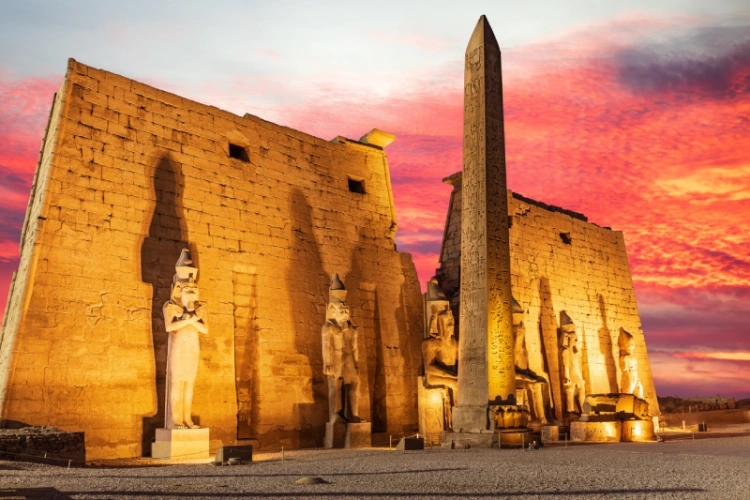

© Copyright 2025 Get Egypt Tour. All rights reserved.